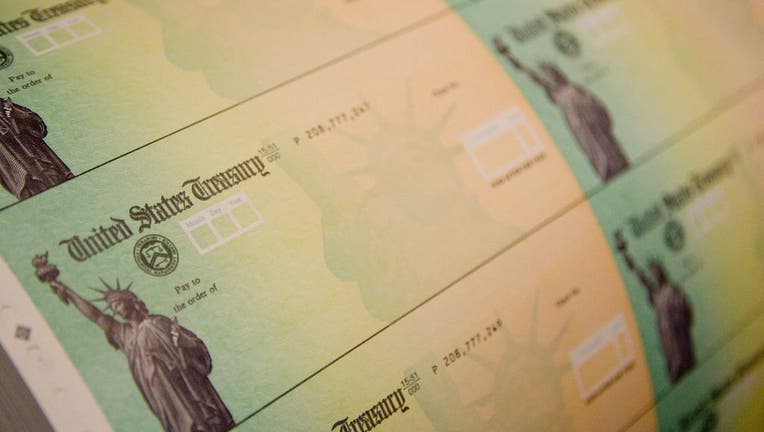Who will receive a third stimulus check? What we know so far

File photo of a government check. (Jeff Fusco/Getty Images)
WASHINGTON - Congressional Democrats are barreling ahead on passing a sprawling coronavirus relief plan without any Republican support, likely ensuring that most Americans will receive a third stimulus check.
But even if you qualified for the first two payments the government distributed in 2020 and at the beginning of 2021, it's possible that you won't receive the $1,400 check.
Although President Biden has maintained that that nearly $2 trillion emergency aid package needs to include direct payments worth $1,400, he's indicated that he's open to narrowing eligibility for the money in hopes of securing some GOP support.
"Further targeting means not the size of the check, it means the income level of people who receive the check," White House press secretary Jen Psaki told reporters during a briefing on Wednesday. "That's something that is under discussion."
One proposal floated by senior Democrats includes lowering the threshold for the payments to begin phasing out above $50,000 for single taxpayers, $75,000 for people who file as the heads of households, and $100,000 for married couples, according to The Washington Post.
Still, Psaki suggested Tuesday during a press briefing that Biden is wary of reducing the income threshold too dramatically. For instance, she said, he believes a nurse and teacher jointly earning $120,000 a year "should still get a check" — something that Biden reiterated while meeting with White House aides.
"That is in his plan," Psaki said. "People need to get the relief they need."
If the relief plan followed a formula in House-passed legislation last year, the $1,400 checks would taper off for individuals who earn $75,000 more a year and families making $150,000 or more. But the phaseout level increases for families with more children, meaning that a family with multiple children earning more than $300,000 a year could theoretically receive some money, even if they have not suffered a financial setback during the pandemic.
New research published by Opportunity Insights, a nonpartisan policy institute based at Harvard University, laid out evidence that the money would be most effective at boosting the U.S. economy if it targeted lower-income Americans.
The economists found that when the government sent out $600 checks as part of the $900 billion relief package Congress approved in December, spending among households making less than $46,000 rose 7.9% from Jan. 6 to Jan. 19 compared to the year-ago period.
By comparison, spending inched up just 0.2% for households making more than $78,000.
"Targeting the next round of stimulus payments toward lower-income households would save substantial resources that could be used to support other programs, with minimal impact on economic activity," the researchers wrote.
FREE DOWNLOAD: Get breaking news alerts in the FOX6 News app for iOS or Android
Under the $900 billion relief package that Congress passed in December, American adults who earned less than $75,000 in 2019 received the full $600 check, while couples who earned less than $150,000 received $1,200. The payments were tapered for higher-earners (5% of the amount by which their adjusted gross incomes exceeded the initial threshold) and phased out completely for individuals who earn more than $87,000 and couples who earn more than $174,000.
The income threshold under the CARES Act legislation was slightly higher: Individuals who earned less than $99,000 were eligible to receive the money, while couples who earned less than $198,000 would receive a check.

Contact 6 tests door handles for COVID-19
Contact 6’s Jenna Sachs collected samples from door handles around Milwaukee and brought them for a local lab for testing. Some samples tested positive for the coronavirus.

